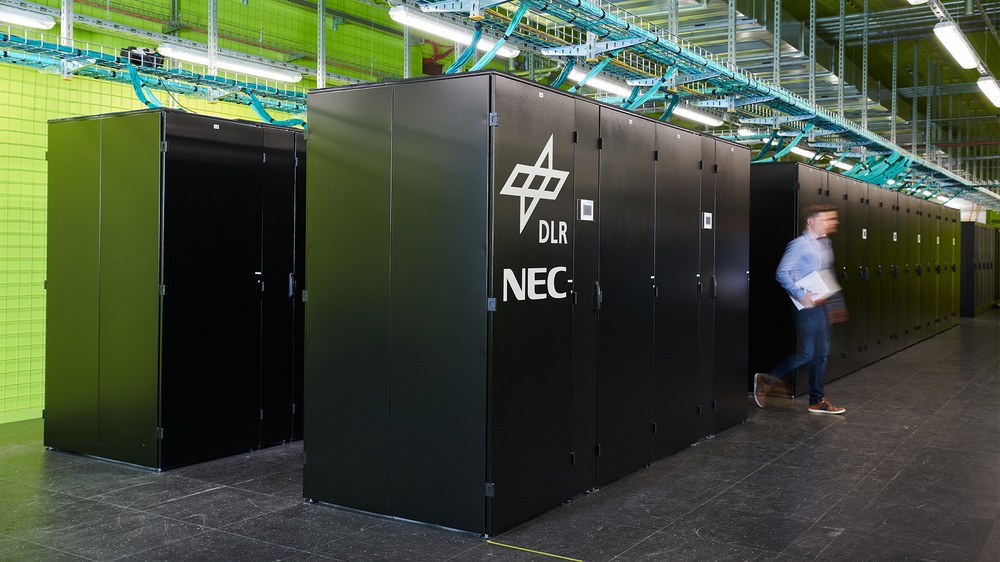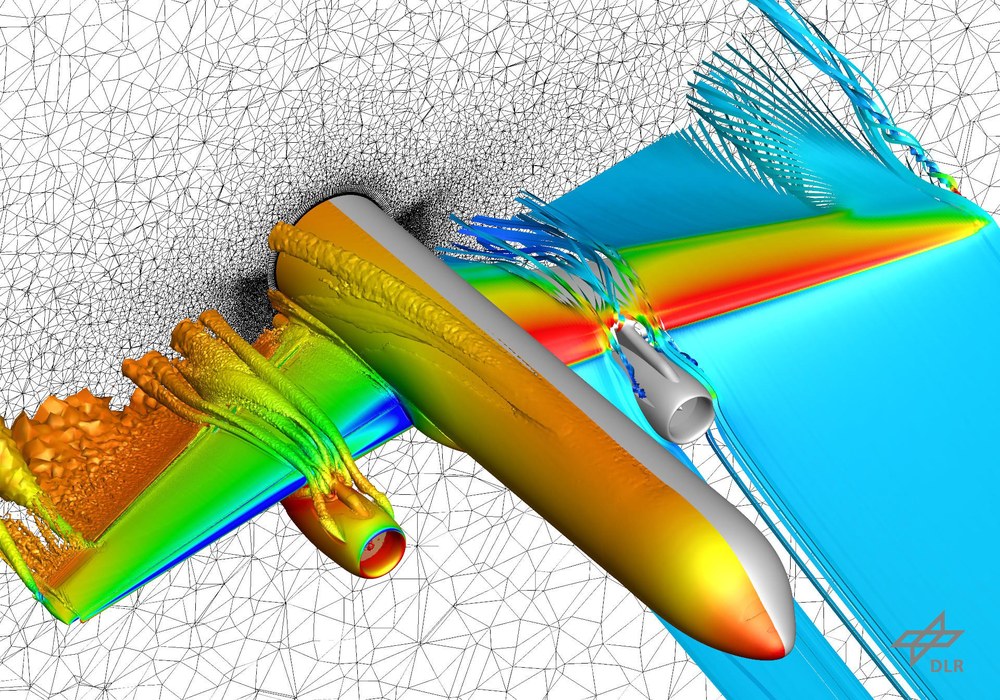CARA


The large-scale research facility 'Computer for Advanced Research in Aerospace' (CARA) is used to carry out numerical simulations. When questions of design and optimisation are transferred into mathematical equations, high-performance computing is required to approach possible solutions. This high-performance computing cluster can be used not only for numerical simulations, such as stall and wake vortices in aircraft, flow resistance of cars or railways, optimal positioning of wind turbines or reduction of pollutants and increased efficiency of combustion processes, but also for AI applications and data analyses.
CARA can be used as the first pillar of support – alongside CARO in Göttingen – by all DLR institutes to solve problems for which conventional personal computers or servers are not powerful enough. The staff of the Centre for Information Services and High Performance Computing (Zentrum für Informationsdienste und Hochleistungsrechnen; ZIH) manage the cluster for DLR. By concentrating on the provision of just a few HPC clusters for a wide range of potential users, a high level of effectiveness and efficiency is achieved.
The CARA HPC cluster has 2280 nodes and is equipped with AMD EPYC processors, each with two AMD EPYC processors and 32 computing cores, 112 nodes each with two AMD EPYC processors and 64 computing cores, and 10 nodes each with four NVIDIA A100 GPUs. The system is water-cooled and has a power consumption of up to 1.2 megawatts. The storage components are divided into 16.5 petabytes of hard disk drive (HDD) and 0.6 petabytes of solid state drive (SSD). CARA has a maximum computing power of 3.2 quadrillion operations per second.
The operation of the system within the Lehmann Data Centre (Lehmann-Zentrum Rechnen; LZR) of TU Dresden marks an important milestone in DLR history. The organisation is no longer accessing high-performance computers through a service provider, but is rather once again investing in high-performance computing facilities that are available to all DLR institutes after almost two decades of leasing equipment.
The many years of experience and expertise of the Faculty of Computer Science at TU Dresden and the ZIH located there are important for the system's operation. The data storage space at LZR and the building infrastructure (power supply, cooling, building automation, etc.) are rented from the Free State of Saxony, represented by Public Enterprise Saxon Property and Construction Management (Staatsbetrieb Sächsisches Immobilien- und Baumanagement). The data centre currently meets the highest energy efficiency requirements. A very low power usage effectiveness (PUE) value of 1.2 can be achieved by cooling the system using water at a relatively high temperature. In the future, the waste heat from CARA will be used to heat the new building of the DLR Institute of Software Methods for Product Virtualization, which is currently under construction just 30 metres to the north.
